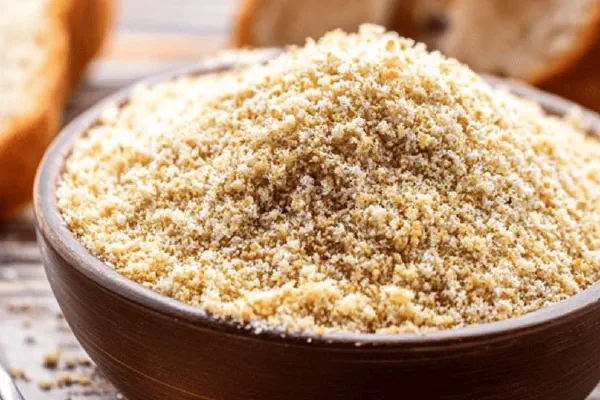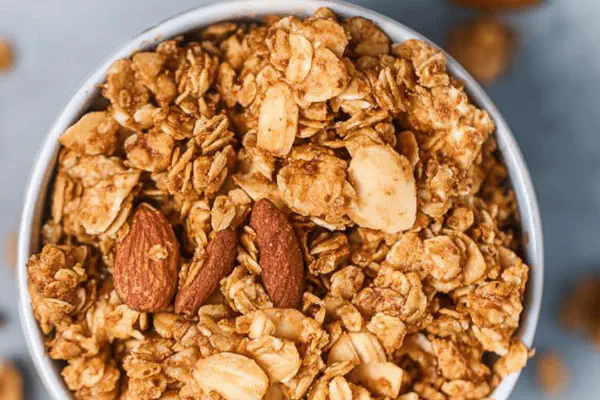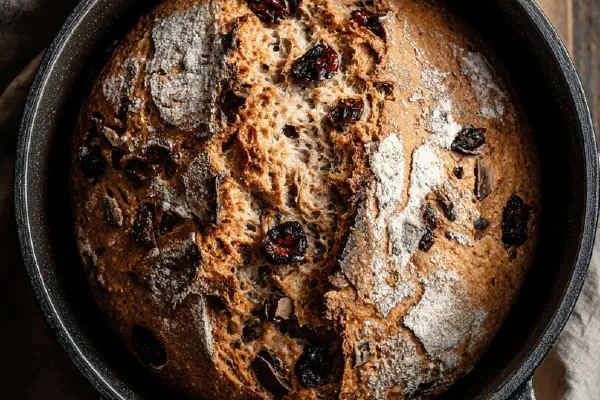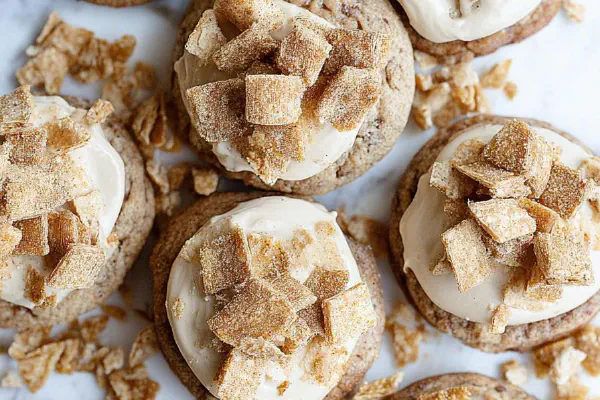Homemade Crisp Breadcrumbs

E
By Emma
Certified Culinary Professional
•
Recipe tested & approved
Making breadcrumbs from day-old bread, dry, crunch—toasty bits that bring texture. Forget store-bought, often stale, bland. Break bread down to manageable chunks, smaller chunks if sourdough or dense loaf. Blitz through a food processor but watch size. Toast on a baking sheet spread thin, golden browning around edges tells you when. Toss often, uneven spots burn quick. Aroma changes from raw dough to nutty toasted notes. Timing flexible, watch color and feel; brittle crumbs sound and snap in fingers. Use stale bread or fresh lightly dried in oven overnight. Swap white bread for whole grain or rye and add a pinch of dried herbs or garlic powder, twist that flavor profile. Storage? Air-tight and keep dry or freeze. It’s about texture, smell, crunch—not clock. Adjust crumb size for coatings or toppings.
Prep:
6 min
Cook:
28 min
Total:
34 min
Servings:
2 servings
#breadcrumbs
#homemade
#baking
#food processor
#toasting
#snacks
#coatings
Breadflakes turning into that brittle gold, breadcrumbs you can crunch in sauces or on roasted veggies, that hidden texture boost. Start with old bread, no waste here. Dense bread means smaller breaks—heard that before? I learned the hard way, chunk size messes with processor action. Food processor pulses, watch that pulse count; not too long or instant bread paste. Spread thin on pan, ovens low and slow—toss off those uneven cooks. Smell’s changing, more nutty than burnt. Crackle noise? Moisture leaving. Cool crumbs crisp up, don’t skip that or you get limp toppings. Spritz oil or sprinkle your fave dried seasoning. Rules? None. Just watch color and snap, not the clock.
Ingredients
- 4 cups day-old bread chunks — roughly 1 inch cubes or ½ inch if dense bread like sourdough
- 1 teaspoon garlic powder (optional alternative to plain)
- Pinch salt
- 1 tablespoon olive oil for tossing (optional, adds depth and crispness)
About the ingredients
Start stale or dry bread—fresh too moist, crumbs will clump and cook unevenly. Dense bread like country or sourdough needs breaking into smaller bits; prevents gummy processing or lumps while chopping. Garlic powder, smoked paprika, or Italian seasoning add quick versatility. Olive oil toss optional but heightens aroma and crisps crumbs better. No food processor? Stash chunks in a plastic bag and bash with rolling pin or heavy skillet—uneven but rustic works. If bread’s wet or moldy, toss it—no shortcuts there. Baking low temp ensures drying without scorching, better texture. Cooling fully essential; crumbs firm up and snap, still warm equals soggy topping. Store airtight in dry place or freeze. Avoid humidity—crumbs suck moisture fast and turn limp.
Method
- Set oven rack mid-level; preheat to 240°F instead of higher 250°F so crumbs dry gently, avoid burning edges.
- Break bread down by hand into chunks; 1 inch works for soft bread; dense loaves like rye or sourdough—aim closer to half inch. Smaller chunks prevent uneven processing.
- Load chunks into food processor. Pulse in short bursts; blitzing too long turns crumbs to mush. Stop when crumbs resemble coarse sand or fine gravel, depending on preference. I prefer medium grit, more crunch.
- Spread crumbs on a rimmed baking sheet (avoid overcrowding) in a single, even layer. Toss crumbs with olive oil and sprinkle garlic powder and salt if using for that aromatic twist. No oil? No problem, dry bake.
- Bake 20-25 minutes. Listen for crackling as moisture evaporates. Smell shifts from doughy to toasty nutty. Stir or toss every 7-8 minutes to prevent burning hot spots. Check color: golden edges with no raw patches. If some crumbs brown faster, shift them around.
- Let cool completely on the pan after baking. Crumbs crisp more as they cool. Test by pinching between fingers—should snap cleanly.
- Store fully cooled crumbs in airtight container. Keep dry or freeze for longer storage. Moisture kills crunch fast.
Cooking tips
Oven rack set mid-level spreads heat evenly around crumbs. Lower temps keep crumbs drying out slowly, prevents edge scorch. Timing is flexible; rely on visual cues like golden edges and smell of toasted bread. Tossing crumbs during baking crucial—hot spots burn fast, stir or shake tray every 7-8 minutes to promote even browning. Note sound change; crackling humidity drying out means almost done. Blitz pulses short to avoid bread mush. If food processor is overloaded, crumbs turn clumpy; do in batches if needed. Spreading in a single layer avoids steaming and soggy bits. Cool fully before storing; warm crumbs trap condensation and spoil faster. For seasoning, mix dry powders into crumbs before baking so flavors toast into crumbs for richer aroma, or add after for fresher punch. Experiment with herb blends or grated Parmesan for fun twists.
Chef's notes
- 💡 Pulse bread chunks briefly in food processor; watch closely. Too long and it turns mush. Aim for coarse sand–some grit for crunch, avoid floury dust.
- 💡 Toast crumbs low, about 240°F. Avoid higher temps that burn edges. Toss crumbs every 7-8 minutes. Hot spots scorch fast. Even layer on rimmed pan prevents steaming soggy bits.
- 💡 Use stale bread or fresh dried overnight in low oven. Fresh moist bread clumps; crumbs bake unevenly. Dense breads like sourdough need smaller chunks—about half inch—process smoother.
- 💡 Add herbs or spices dry before baking for infused aroma. Garlic powder works well, or smoked paprika for smoky notes. Optional olive oil toss boosts crispness and browning but skip if drying out.
- 💡 Cool completely before storing. Warm crumbs trap moisture; ruins crunch fast. Airtight container essential. Freeze for longer storage—crumbs hate humidity and go limp quick.
Common questions
Can I use fresh bread?
Fresh usually too moist. Clumps form. Dry it out overnight or toast lightly first. Skip if crumb breaks soft or mushy.
What if crumbs burn unevenly?
Pan overcrowded or heat too high. Spread thin, toss often at low temp. Mid rack helps even heat circulation. Baking sheet rim keeps crumbs contained.
How fine should breadcrumbs be?
Depends on use. Coarse for crunch coatings, fine for mixing into dishes. Pulse in short bursts; stop as soon as crumb size fits your need.
Best way to store crumbs?
Airtight container mandatory. Dry cool spot. Freeze if you don’t use soon. Avoid fridge—humidity kills crispness. Warm crumbs before storage cause clumping quickly.



